Method according to Scriptures
1. Immediately after cremation, bath by taking a dip in a river, lake or with well water while chanting continuously. (note 1)
2. For offering tilanjali, the karta (The person who performs the rite) should place some black sesame in a pot containing water. Then the karta, the family members and other relatives & friends should offer this water containing black sesame thrice on the ashma along the Pitrutirtha portion of their palms while uttering ‘एष ते तिलतोयाञ्जलिस्तवोपतिष्ठताम्’, meaning ‘tilanjali is being offered unto you’ while mentioning the gotra (Lineage according to Vedic science) and the name of the deceased. One whose father is alive should not offer tilanjali.
3. After returning home, keep the ashma in the area around the tulsi-vrundavan but not besides the tulsi plant.
4. Bite a neem leaf before entering the house. Then perform achman (Sipping water from the palm), touch Holy items like fire, water, cow dung, white mustard etc. and then step on a stone (Step made of stone) before finally entering the house slowly.
5. In some neighbouring house, prepare a food item called ‘pithale – bhat’ (pithale – a sauce like gravy made from gram flour boiled and spiced; bhat- plain white cooked rice) for meals and bring it to the house of the deceased. Take a small portion of this on a leaf (preferably a banana leaf) and place it outside the house as naivedya (Food offered to the Deity as part of ritualistic worship) for Vastudevta (Presiding Deity of a premises) and Sthandevta (Presiding Deity of the place). The remaining food is to be offered to the Ishtadevata (Benevolent Deity) and then consumed by all.
(Note 1 : If it is not possible to bathe outside, then, On returning home after cremation, place ashma in the area around tulsi-vrundavan. Before entering the house, purify yourself by sprinkling gomutra (Cow’s urine) all over your body, bite a neem leaf and enter the house slowly, then all should bathe while chanting, and then offer tilanjali as mentioned above in point 2)
Immersion of asthi (Bones of the deceased)
The asthi are collected either on the day of cremation or on the 3rd, 7th or 9th day and are immersed in flowing water before the 10th day. If asthi are to be immersed after the 10th day then it should be done only after performance of tirtha-shraddha.
Pindadan
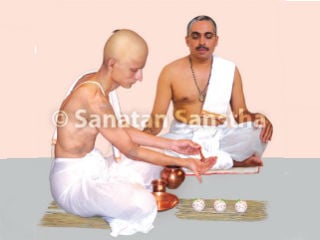
According to the science of rituals, rites such as tilanjali and pinḍadan should be performed beginning from 1st day till the 10th day. Visham shraddha should be performed on odd days. If that is not possible then uttar-kriya should begin from at least the ninth day. On 10th day, pinḍadan is performed in a Shiva temple or that of an inferior Deity situated on the bank of a river. After the pinḍadan on the 10th day, a little coconut oil is poured on the ashma and it is immersed in flowing water.
Acts to be performed on 11th and 12th day
1. On the 11th day, panchagavya (A mixture of cow’s milk, curd, ghee, cow’s urine and cow dung) hom (Fire-sacrifice to appease Deities) should be performed in the house and panchagavya should be sprinkled all over the house. All family members should sip panchagavya.
2. The karta should make a sankalp (Resolve) for the benefit of the deceased and donate food-grains and perform dasha-dans (Ten types of donations or offerings). Ekoddishṭa shraddha, Vasugan shraddha and Rudragan shraddha should be performed outside the house.
3. Sapindikaran shraddha : Sixteen monthly shraddhas are performed on 11th or 12th day so that one becomes authorised to perform sapindikaran shraddha.
4. Sapindikaran shraddha is performed on the 12th day. With the performance of sapindikaran shraddha, the jiva attains the title of ‘Pitru’ and gets a place in Pitrulok.
The ritual of Nidhanshanti (Shantodak)
On the 13th day, Patheya shraddha is performed and ritual of Nidhanshanti is performed. All the near and dear ones should be invited and served a sweet meal.
Sutak
The specific period of impurity applicable to the members of the family lineage and relatives of a person (after the death of the person) is known as sutak. To the family members of the dead, sutak is applicable for a period of ten days, while to the performer of the last rites it is applicable for twelve days. A person undergoing the period of sutak should not touch other people nor perform any religious or auspicious acts, should not participate in any social activity and should not have food with others. After the period of the sutak is over, the person affected should purify himself by bathing and sipping panchagavya.

 Remember this while performing the rites of cremation during calamitous times!
Remember this while performing the rites of cremation during calamitous times! Performing ‘Palashvidhi’ as recommended by scriptures, if the final rites cannot be performed on the...
Performing ‘Palashvidhi’ as recommended by scriptures, if the final rites cannot be performed on the...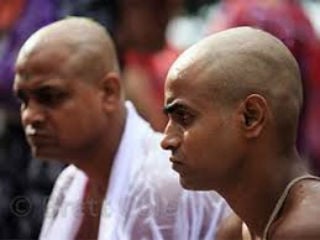 Rituals to be performed at home after death
Rituals to be performed at home after death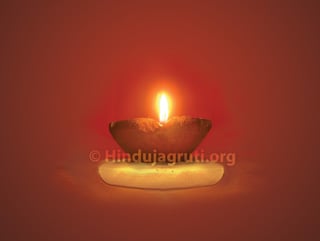 Initial rites to be performed at home after death
Initial rites to be performed at home after death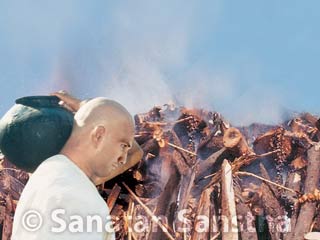 Rituals of cremation
Rituals of cremation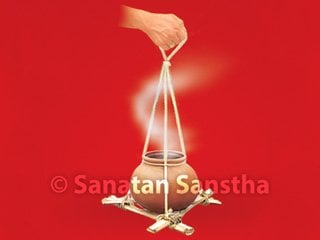 Preparation for the cremation and the funeral process
Preparation for the cremation and the funeral process